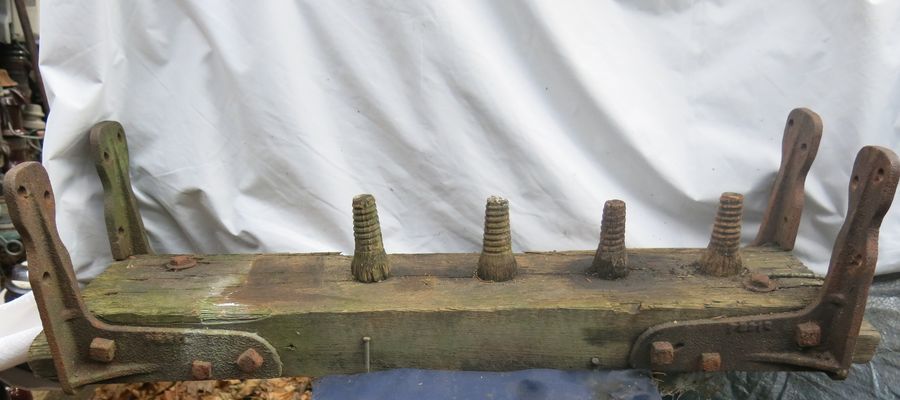Cross Timber or "Arm" Used Between Tracks on the Boston Orange Line.
By Joe Maurath, Jr.; posted February 13, 2022
View Original: Click to zoom, then click to magnify (3968 x 1765) 1134KB

|
Without insulators... showing a crossmember once supporting insulators that electrified the elevated "Orange Line" that existed in Boston. Super-duty cast iron L-shaped brackets mounted into the creosoted with heavy duty lag screws were secured on all four corners for mounting to the structure (beneath a center catwalk). Conductor spacing between "arms" was approximately 15 to 25 feet as I recall. Some of the CD 267 and 267.5 insulators that survived have wood grain "imprints" from sitting directly on these wood arms, notably those insulators that had shorter pins or lower pinholes. In addition, some of these insulators have clear imprinting of the individual copper wire strands from their very thick conductors embedded in the glass. Like the base rim wood grain "footprints" or "fossils", cable wear abrasion into their insulators' glass was attributed to 85-plus years of transit car vibration. The latter also contributed to glass fracturing, both in the saddle groove and base rim areas. Originally the DC cables that operated the Orange Line were insulated with cambric or cloth. This soon wore away, exposing the bare cable (strands). Thicker cable (about 1.45 inches in diameter) was employed from the line's portal to the Washington Street station (heading west for at least a mile). From there to the Orange Line's terminus gradually smaller size cable was used. The contractors who removed it said it was about 1.5 inches in diameter from Washington Street and about 1.25 inches in diameter towards the line's end. |